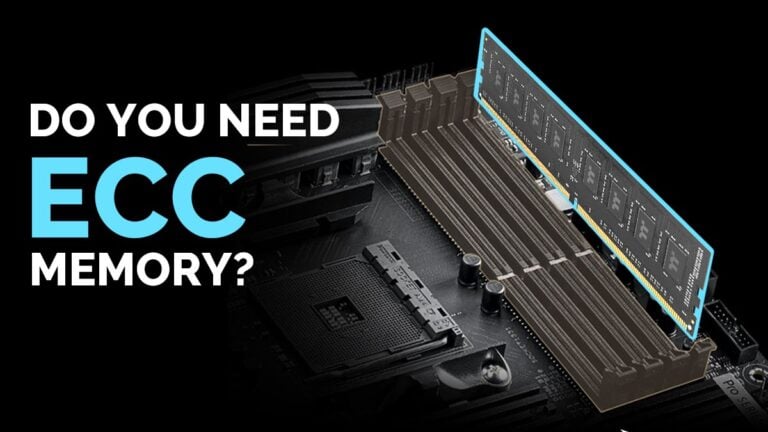What Is ECC Memory and Who Needs It? ECC memory, or Error-Correcting Code memory, plays a crucial role in ensuring data integrity in computing systems. It helps detect and correct internal data corruption, making it particularly valuable for servers and systems where reliability is paramount. Understanding its function and benefits can help you decide whether it’s something you need for your own computing setup.
Considered a lifeline for businesses that rely on uninterrupted data processing, ECC memory is designed to enhance system stability and prevent costly errors. As technology advances, the demand for reliable memory solutions continues to grow, making it essential to grasp what ECC memory entails and who stands to benefit from its implementation.
In today’s fast-paced digital world, content creation has become an essential skill for businesses, bloggers, and individuals alike. The ability to craft engaging articles not only enhances one’s online presence but also establishes authority in a particular field. This article will explore the art of content creation, providing insights into effective writing techniques, understanding your audience, and optimizing for search engines.First and foremost, understanding your audience is the cornerstone of effective content creation.
Before you put pen to paper (or fingers to keyboard), take a moment to consider who will be reading your piece. What are their interests? What questions do they have? What challenges are they facing? By recognizing the needs and preferences of your target audience, you can tailor your message to resonate with them.
This level of personalization can significantly enhance the impact of your writing.Next, the importance of a compelling headline cannot be overstated. A headline serves as the first impression of your article, and it’s crucial to make it captivating enough to draw readers in. An effective headline should be concise yet descriptive, giving potential readers a clear idea of what to expect.
For instance, instead of a bland title like “Tips for Writing,” consider something more engaging like “Master the Art of Writing: 10 Tips to Captivate Your Readers.” This revised headline not only informs but also piques curiosity.Once you have your audience and headline in mind, it’s time to craft the introduction. A strong introduction sets the tone for the entire article, grabbing attention and encouraging readers to continue.
Start with an intriguing fact, a thought-provoking question, or a relevant anecdote. For example, you might begin an article on productivity with a statistic about how much time people waste each day. This immediately engages the reader and establishes relevance.The body of your article is where you delve into the details. Here, it’s essential to maintain a clear and logical structure.
Use subheadings to break up the text, making it easier for readers to scan and find the information they need. Bullet points and numbered lists can also enhance readability, allowing readers to absorb key points quickly. Each paragraph should flow smoothly into the next, creating a cohesive narrative that guides the reader through your ideas.Additionally, incorporating storytelling elements can make your content more relatable and memorable.
Sharing personal experiences or anecdotes not only humanizes your writing but also helps to illustrate your points more vividly. For instance, if you’re writing about overcoming challenges, sharing a personal story of resilience can inspire and connect with your audience on a deeper level.Another crucial aspect of content creation is maintaining an appropriate tone and style. Depending on your audience, you may want to adopt a more formal or casual approach.
For business-related content, a professional tone may be more fitting, while lifestyle blogs can benefit from a friendly and conversational style. Regardless of the tone you choose, consistency is key. Sticking to a particular voice helps to build trust and familiarity with your audience.In addition to style, consider the length of your content. While there’s no one-size-fits-all answer, longer articles (around 1,000 words or more) tend to perform well in terms of and reader engagement.
However, quality should always take precedence over quantity. Ensure that every word serves a purpose and contributes to the overall message you want to convey.Now, let’s discuss the importance of optimizing your content for search engines. , or search engine optimization, is vital for increasing the visibility of your articles online. Start by conducting research to identify relevant terms that potential readers are searching for.
Incorporate these s naturally throughout your content, including in the title, headings, and body text. However, avoid stuffing, as this can lead to a negative user experience and hurt your rankings.Additionally, consider including internal and external links within your articles. Internal links guide readers to more of your content, keeping them on your site longer and improving engagement. External links to credible sources can enhance your article’s authority and provide added value to your readers.
Remember to use descriptive anchor text for your links, as this improves accessibility and helps with .After you’ve crafted your article, take the time to revise and edit. A polished piece reflects professionalism and credibility. Look for grammatical errors, awkward phrasing, and typos. Reading your article aloud can help you catch mistakes that you might miss when reading silently. Additionally, consider seeking feedback from peers or colleagues, as fresh eyes can offer valuable insights.Finally, don’t forget about promotion.
Once your article is published, share it across your social media platforms, email newsletters, and other channels. Engaging with your audience through comments and discussions can also boost visibility and foster a sense of community around your content. Encourage readers to share your article, as word of mouth can be a powerful tool in expanding your reach.In conclusion, effective content creation involves understanding your audience, crafting engaging headlines, structuring your articles thoughtfully, and optimizing for search engines.
By mastering these techniques, you can elevate your writing and make a lasting impact in the digital landscape. Whether you’re a seasoned writer or just starting, remember that practice makes perfect. Embrace the journey of content creation, and watch as your skills and audience grow.










